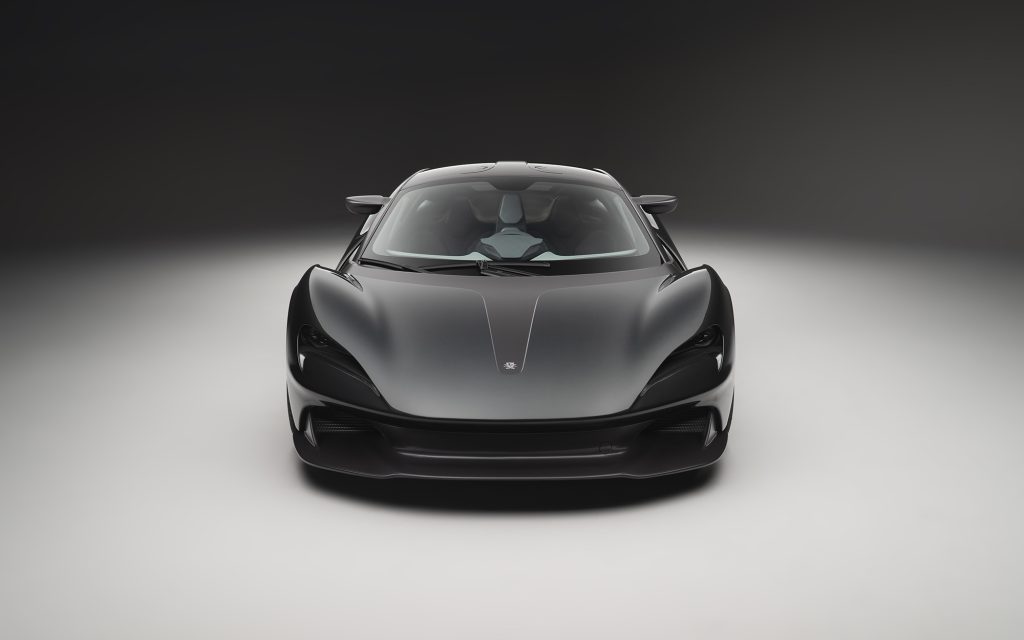
Lazante Reveals 95-59 3-Seater McLaren at Goodwood Festival of Speed
“This is the car I have always wanted to build. There is nothing quite like the experience of a central driving position, and this car will take the concept to a different level.” – Dean Lanzante
- 95-59 name neatly and concisely explains the origins of where this latest project has stemmed from; the year Lanzante won the famous 24 Hours of Le Mans and the race number of the winning car
- Sculpted carbon fibre body shrink-wrapped around bespoke 3-seat cabin with the driver at the centre of the action
- Producing over 850bhp and 880Nm, and weighing as little as 1,250kg with optional ‘LM30 Pack’, to deliver 700bhp per ton
- Bespoke engineered programme penned by renowned automotive designer Paul Howse
- Designed with a cohesive and organic link between exterior and interior
- Luggage space and extended cruising range ensure useability for owners
- Motorsport experience is evident throughout the engineering and build, ensuring ease of maintenance and servicing
- The ultimate 30th anniversary celebration of the Lanzante victory at the 24 Hours of Le Mans
- Production strictly limited to 59 bespoke examples
- Project priced at £1,020,000 plus local taxes
[source: Lanzante]
Goodwood, UK – The covers have finally been removed from the new Lanzante 95-59, as the central highlight of the company’s Goodwood Festival of Speed celebrations, marking 30 years since claiming outright victory at the 24 Hours of Le Mans. The 3-seat bespoke project is the distillation of three decades of lessons learned, knowledge and expertise, and will provide access to an exclusive club; putting the driver at the centre. 95-59 is true to the very meaning of ‘driver focused’.
Taking its name from an enviable history, 95-59 explains the story of where this latest Lanzante project started out; the year Lanzante claimed its famous victory at Le Mans and the race number of the winning car.
Designed from the outset as a genuine three-seater, capable of extended cruising with luggage space, 95-59 is a step change in design, driven by obsession at every step. The final design, engineering practices and technologies used throughout 95-59 represent the latest in innovation, and every decision has been made with the driver as the main focus. Extensive ergonomic, technical and engineering evaluations combine with the lessons learned by the team responsible for some of the most extreme and exclusive automotive projects. The end result will be one of the most exciting modern-day drivers’ cars.
“95-59 is the result of everything I personally and we, as a business, have learned and experienced over three decades since winning Le Mans,” explained Dean Lanzante.
The bespoke project is presented at Goodwood for the first time as a production-intent styling concept, with its full carbon fibre body finished in Ueno Grey – matched to the exact shade of the 1995 Le Mans winner. At its core, 95-59 is based on a current McLaren platform, using a carefully re-engineered example of the carbon fibre chassis. This proven architecture provides the strength and versatility required, supporting the adaptation to comfortably accommodate three occupants. Within the newly designed and driver-centric cockpit, a lightweight moveable central seat is flanked by two outer passenger seats, integrated into the redesigned chassis. Power will be in excess of 850bhp with 880Nm of torque, delivered from a revised 4.0-litre V8 twin turbo engine combined with a seven-speed SSG transmission.
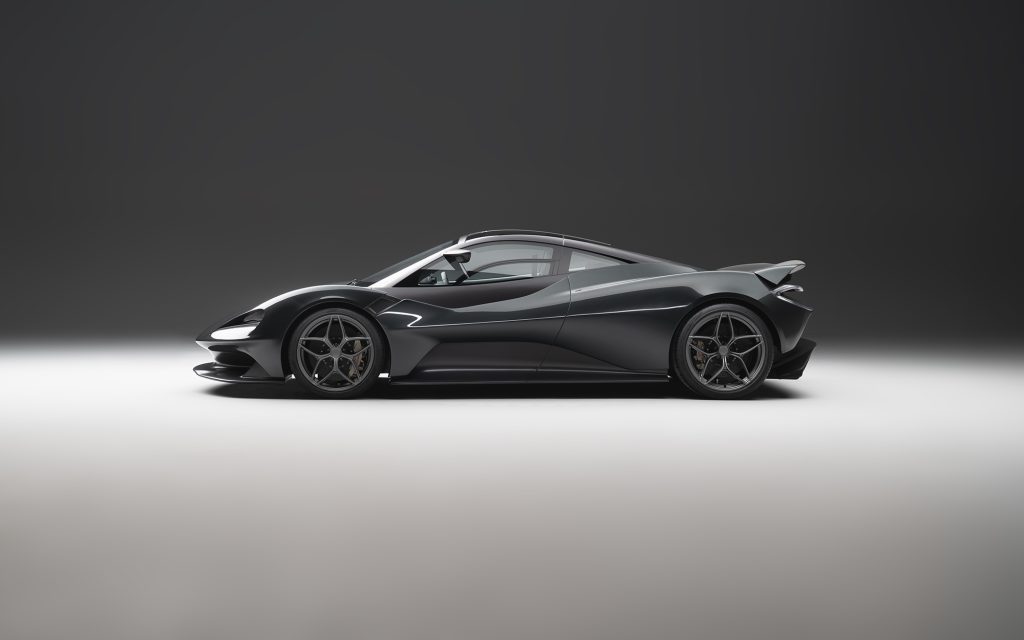
“95-59 has a very natural balance to it. By its very design, with the driver as the focal point, it works as a piece of design, with symmetry and very natural forms,” explains Chief Designer, Paul Howse. “The design is a continuing development of my design theory, based on the efficiencies of organic shapes, and we have worked hard to deliver something that pushes the boundaries. Like the famous win 30 years ago, 95-59 is something that has not been seen or done before. However, working closely with Dean and the team at every stage, we have developed a design which stays true to the ethos of everything Lanzante has become known for over the past three decades.”
With a target weight of just 1,250kg, 95-59 is presented in its lightest and most distilled configuration, with the optional ‘LM30 Pack’. This enhancement delivers a power to weight figure of 700bhp per tonne, positioning 95-59 within an exclusive group of supercars. The LM30 Pack combines to save around 20kgs in weight. It includes super-lightweight forged aluminium wheels, Inconel exhaust headers, titanium secondary and tailpipes, titanium body fixings, and gold-plated heat-shielding throughout the engine bay and exhaust, used for its superior heat protection. Subtle ‘LM30’ badging identify the pack from the exterior, while an embossed map of the Circuit de la Sarthe on the driver seat headrest, and scrutineer-style chassis plaque act as a reminder to where the project was born.
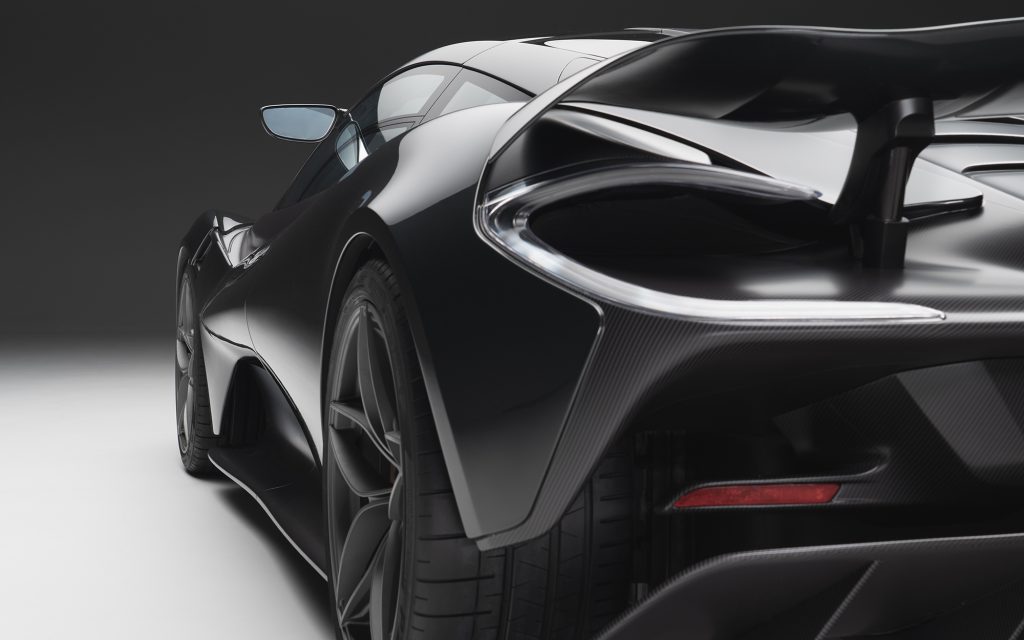
SPECIFICATION
Engine:
4.0-litre twin turbo V8
Power:
In excess of 850bhp / 880Nm
Transmission:
7-speed SSG
Chassis:
Carbon fibre monocoque, re-engineered with integrated passenger seating
Bodywork:
Full carbon fibre
Aerodynamics:
Floating active aero rear wing
Target weight:
1,250kg
Bhp per ton:
700
Dimensions
Height: 1,186mm
Width: 1,974mm
Length: 4,574mm
Wheelbase: 2,670mm
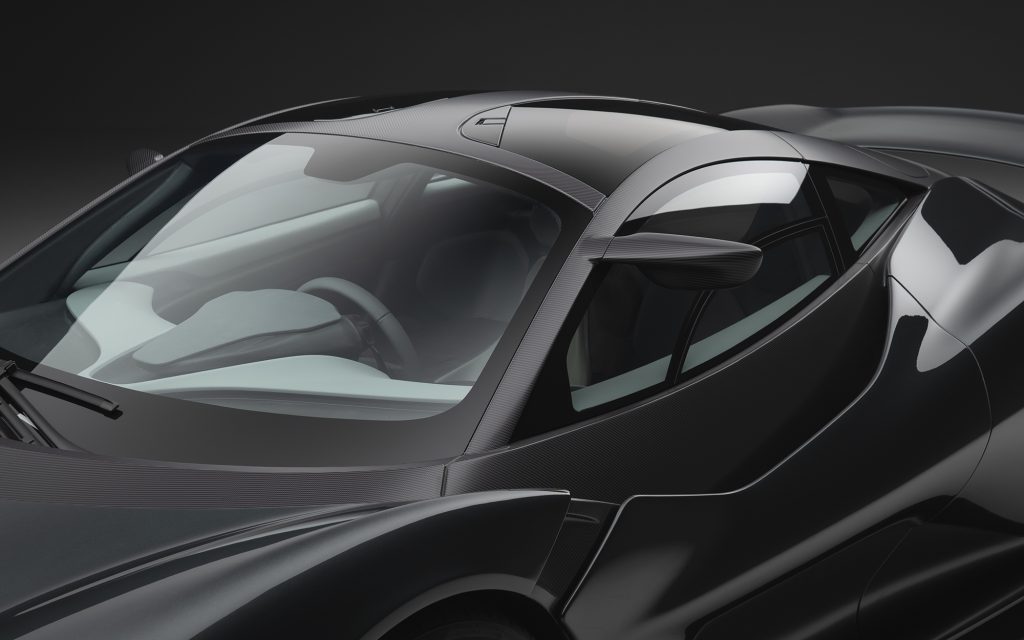
THE THINKING BEHIND 95-59
“95-59 is the result of everything I personally and we, as a business,
have learned and experienced over three decades since winning Le Mans.”
Dean Lanzante
Lanzante first delivered a road-going project in 1997, with the conversion of a McLaren F1 GTR to road use for a customer. That customer is still part of the Lanzante family to this day, and has been a part of the 95-59 journey since the outset. From that first road conversion project, Lanzante has created beautifully designed and crafted models for the most discerning car collectors and enthusiasts. The team, led by Dean Lanzante, has established a proven track record for the design and build of tailored commissions based on some of the world’s most iconic supercars.
The project started out as the ultimate tribute to the history of the Le Mans victory.
Close discussions and feedback from such a valued client base, which includes previous and current owners of 3-seat models as well as a range of the latest super and hypercars, has proven invaluable in the way the project has evolved. With a connection to where Lanzante has come from, this important group share the vision and obsession which Lanzante has become renowned for. It is through and with these clients that 95-59 has been formed.
As the project has gathered momentum, it has become the most focused expression of the Lanzante brand. It is designed to connect drivers in a way that no other car does. Purity, perfected through obsession.
“Crossing the finish line at Le Mans was actually the start of this journey to where Lanzante is now, and we are always looking to push boundaries and perceptions,” explains Dean. “Our projects regularly require us to answer the questions that others have either not wanted to ask, or have avoided, and I am proud to keep asking the questions to push what is possible.”
“The original brief of ‘Project 95-59’ was to create something accessible and useable, for drivers. Three seats, luggage space, enhanced range; something drivers could, and wanted, to use. We wanted to deliver the same enjoyment and passion of buying and owning a classic car but in a contemporary way. Full focus on what the driver needs and wants, with a blend of modern technologies but pared back to maintain driver focus.”
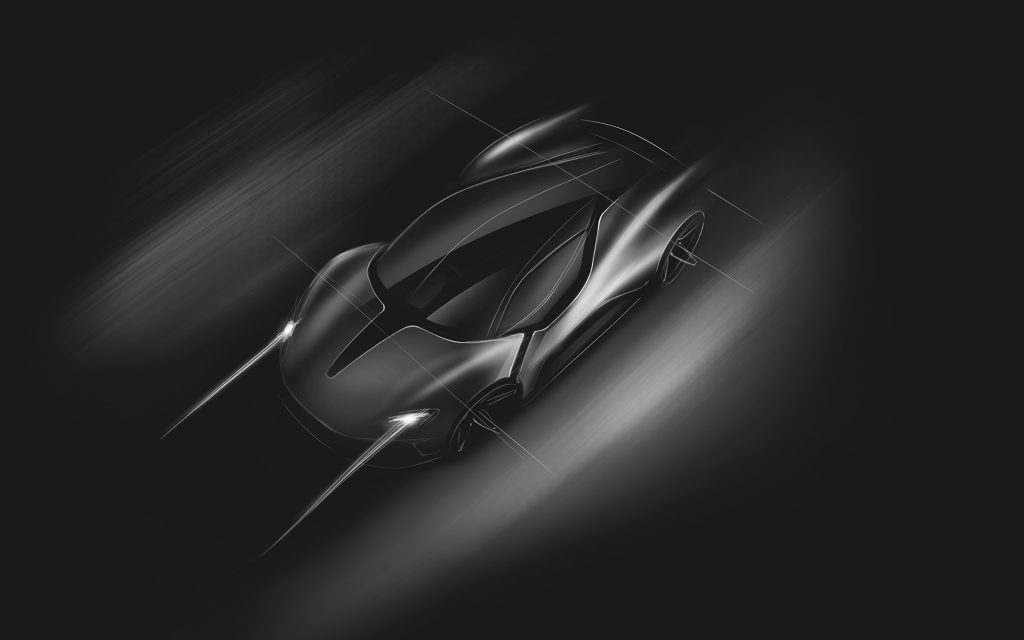
EXTERIOR DESIGN
“The 95-59 offers perfect symmetry. Perfect balance. Perfect focus.”
Paul Howse, Chief Designer
The design of 95-59 was led by renowned automotive designer, Paul Howse, and the flowing but muscular lines show a natural evolution of his previous work.
“Paul was the natural choice for leading the design of this project, and bringing our thoughts to life,” explains Dean Lanzante. “The McLaren P1 changed the game in terms of design when it was first unveiled, and still looks modern and fresh today. We worked with him on the P1 Spider, and 95-59 takes his concepts and design language to the next level.”
“95-59 is making a statement, on a number of different levels. It is the distillation of everything that Dean and the Lanzante team has learned and experienced since one of the greatest achievements a team can make in motorsport. With that as a starting point, it is a strong foundation,” explains Paul. “For me, personally, it is also the culmination of ideas and thoughts I have had throughout my design career, working across different projects”.
“Having taken a step away from car design in recent years, and now coming back to it with fresh eyes, 95-59 has given me a chance to re-evaluate and engage all the experience I have gathered, and approach things with a more mature and refined approach. With the forms and designs now able to be created through new technologies and the latest innovations, 95-59 is the ultimate expression of what I have always wanted to create.”
With the support of a dedicated team, Paul was given freedom to deliver a design which did not follow a legacy, but to blend performance and design through purpose. Every line, surface and angle has been a conscious decision, in close discussion with the engineering team, to ensure that every element of 95-59 has a purpose and delivers a result.
“The central driving position was a key part of the initial discussions for this project” comments Paul. “We wanted something that looked organic, with an aggressive edge to it, but clean. In the same way fighter jets are designed with purpose and poise, without superfluous intricacies and design trends. The final design is beautifully balanced and cohesive from every angle, without being ‘on trend’ or following the current design rules. It is not so much as a nod to heritage, but because it is fundamentally correct – I like to think we have created something that is unlike anything else; building its own legacy.”
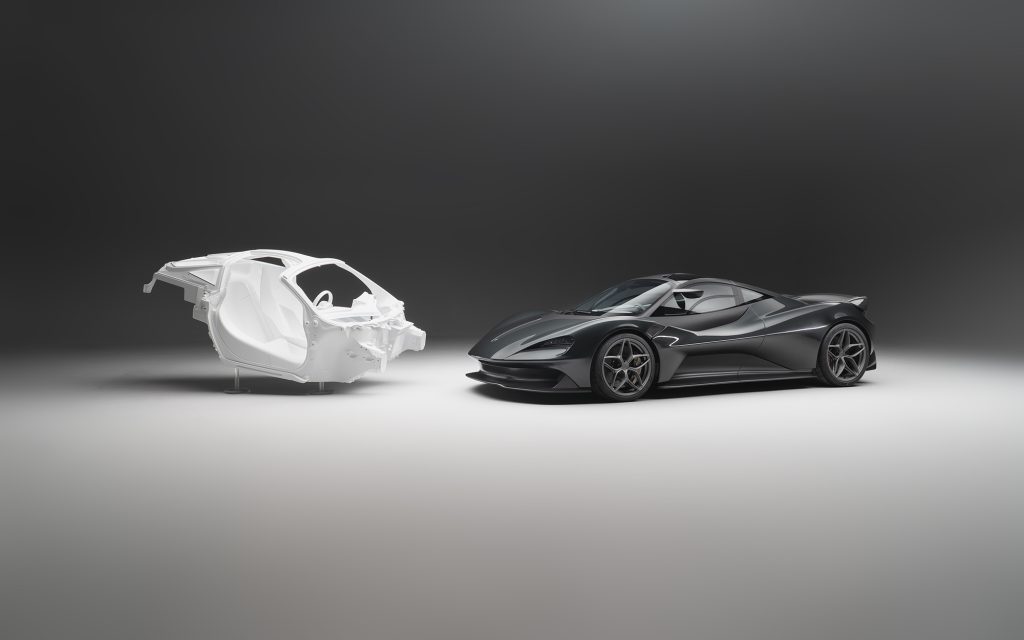
An important step in the design process was the transition from digital to reality, as CAD was transformed to clay, as Paul explains. “The clay modelling phase was critical to how we arrived at this final shape for 95-59. From my initial sketches, and the engineering discussions with Dean, we created a CAD model where the volumes and proportions were refined and perfected using VR headsets, allowing the theme to be crafted. This laid strong foundations onto which the clay could be progressed, with the shape really taking a big step forward. From a design perspective, clay gives that sensitivity and feel like nothing else, and the programme moved on significantly as we closed in on the final shapes.”
With a design theory based around the efficiency of organic shapes, 95-59 develops the ‘aerodynamic air paths’ logic, evident in Paul’s previous work. These air paths can be clearly identified with the two-layered design, with the lower, visual carbon fibre surfaces, telling the aerodynamic story; creating downforce and of ejecting high pressure from the front wheel well. The beautiful aerodynamically efficient surfaces are then tightly wrapped over the top.
At the front, the design is dominated by the low-level leading edge of the nose, with a ballistic shape highlighting the aerodynamic form which follows from the leading edge. A seamless, single-piece clamshell bonnet features the signature central ‘V’ – carried through to the interior and steering binnacle – emphasizing the central seating position. The bonnet design has also been engineered with an integrated duct along its trailing edge, in place of more traditional louvres. This innovative design reduces air pressure over the front wheels and maintains a clean surface, whilst also providing a clear visual separation for the panel and hiding any shutlines. Inside this outlet, air is channelled along the twin-layered, sculpted dihedral doors. As air flows along the flanks of the doors it is split across the rear quarter panel and into to the highly efficient bespoke radiators. These have been designed specifically to ensure that the exterior of 95-59 stays true to the design language.
From the side profile, the aerodynamic efficiency is visually enhanced by an ‘bullet-like’ trajectory design, piercing the air. Originating at the leading edge of the low-level nose – like the tip of a bullet – all lines and surfaces then expand from this point, with creating a design where nothing is static or parallel, everything has movement. The central ‘bone line’ of 95-59 purposefully flows cleanly from nose to tail, at a clean but raked angle, adding an element of cohesion to the design.
“With 95-59, we wanted to push the ‘bone line’ – or waistline – as low as possible,” explains Paul. “It is traditionally quite high on modern cars, but with a lot of work completed to lower the nose and rear packaging, we were able to keep this focal point much lower, thus lowering the visual mass of the overall package.”
The dramatic and sculpted rear features a very low-level rear deck, with a centrally-mounted titanium exhaust as the focal point. Taking inspiration from the brutalist-organic forms of the fifth-generation F22 fighter jet, this sits below a floating active aero rear wing. This can be deployed into a more aggressive aerodynamic position, providing increased downforce at the rear of the car. The rear is framed by a delicate but distinctive rear light signature, showing a natural evolution of Paul Howse’s design style. He recalls, “we came up with tens of different concepts for the rear of the car – with a link to the heritage of the project, but moving things on in our own way, so it stands on its own as a piece of cohesive design. Function has helped create the form, and through developing these efficiencies at the rear, and innovative packaging solutions under the bodywork to evacuate as much heat from the rear of the car, we have been able to refine the initial concepts. Combining this with the latest in lighting technology and pushing the trailing edge of the bodywork as low as possible, the rear of 95-59 makes a real statement.”
Completing the design, 95-59 sits on newly-designed lightweight forged aluminium wheels which have links to the F1 GTR but also pick up on the sculpture of the body– 19-inch at the front, 20-inch at the rear.
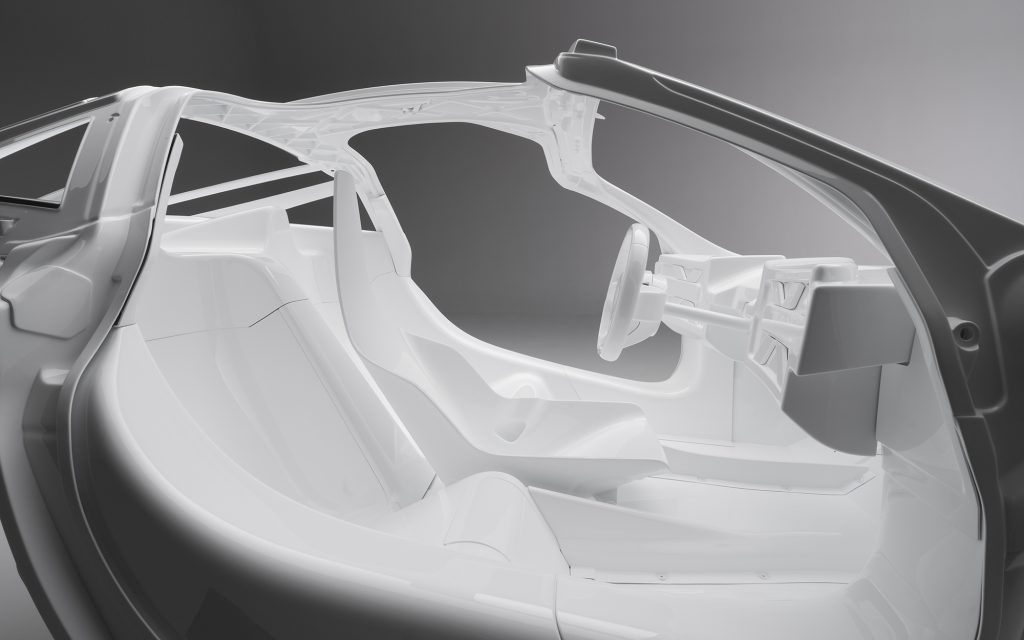
INTERIOR DESIGN
The design of the interior had to at least match up to the visual drama of the exterior
– which was no easy task!
Paul Howse, Chief Designer
An important factor of the design of 95-59 was overall cohesion. Every angle, and the flow from the leading edge of the bumper to the floating active aero rear wing, follows the design philosophy of organic forms. Crucially, the interior follows this same thought process and approach, having also been imagined by Chief Designer, Paul Howse. “It was critical to us that the design language of 95-59 flowed as seamlessly as possible between the exterior and interior. We worked hard to ensure there was cohesion around the full exterior, and the full interior for occupants, with the team working hand-in-glove across both aspects, in parallel. This has led to a symbiosis between the bodywork and the cabin, with design features, shapes and forms linking between the two, which is rare.”
At the front, the central bonnet graphic alludes to the story of the interior, while further shaping of the exterior design link the two elements together, which is rare in modern automotive design. The outer forms of the dashboard echo the tips of the front clam and the theme of ‘one continuous line’ is mirrored through the bone line of the dashboard into the door cards.
Dihedral doors open to an interior which is dominated by the centrally mounted driver seat. Glass roof panels and upper elements of the roofline flood the cabin with light, and the two passenger seats are integrated into the chassis, sitting either side of the driver. The clean design ensures functional switch packs are relocated, allowing for ease of ingress and egress from either side. Transmission buttons are positioned instinctively on the steering wheel, while further switches and buttons are ergonomically positioned in the roof pod, and within easy reach either side of the centrally mounted steering wheel, incorporated with a single screen on each side displaying important but minimal information to minimize distraction.
The driver seat sits low, mounted on lightweight runners, while the relocated steering column and pedal box are fixed. Either side of the bespoke lightweight seat, incorporated into the chassis floor, the central driver zone has been designed to provide outer edge support for the driver and passengers’ feet. The seating for the passengers is formed within the bespoke carbon fibre chassis, with integrated headrests and leg support. With passengers sitting lower, a low level rear deck behind the cabin provides rear clear visibility and additional stowage space.
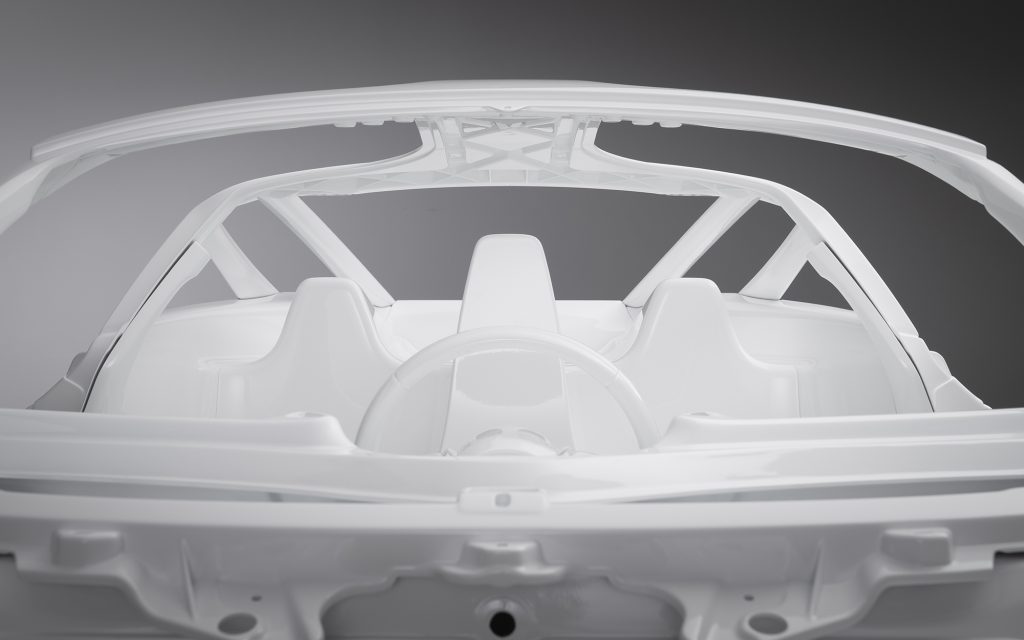
PUTTING THE CUSTOMER AT THE CENTRE
We are proud to have some of the most amazing customers in the world,
and they have been on every step of this journey with us.
Dean Lanzante
Useability has been a major focus in the development and design of the 95-59 programme, ensuring that owners can enjoy their car in all scenarios. Dean explains “Throughout this project, we have worked very closely with a small, select group of valued clients to understand exactly what will actually work, and how they would potentially use a car like this. They have been on the journey with us – some for many years – and they are a mine of information, especially those who know the merits and limitations of owning and using a central-seat car. It has been as important for us to create the ultimate product, that pushes what is possible and challenges people to understand the engineering behind it, but which also meets the needs of those people who will ultimately own and run it. It has been a really fantastic experience of learning, and listening, while also looking for new or innovative processes.”
With a heritage born on the track but dedicated to ensuring owners can fully enjoy cars on the road 95-59 is a car to be experienced. Luggage space for multiple bags is located below the single-piece front clam, while a 75-litre fuel tank offers extended cruising range.
95-59 has been designed and developed to be a cost effective and easy to maintain in terms of ownership. Easy access and careful design consideration evidence a focus on ease of use, maintenance and servicing.
Visit www.lanzante.com or follow Lanzante via @lanzantelimited on Instagram to be kept up to date.
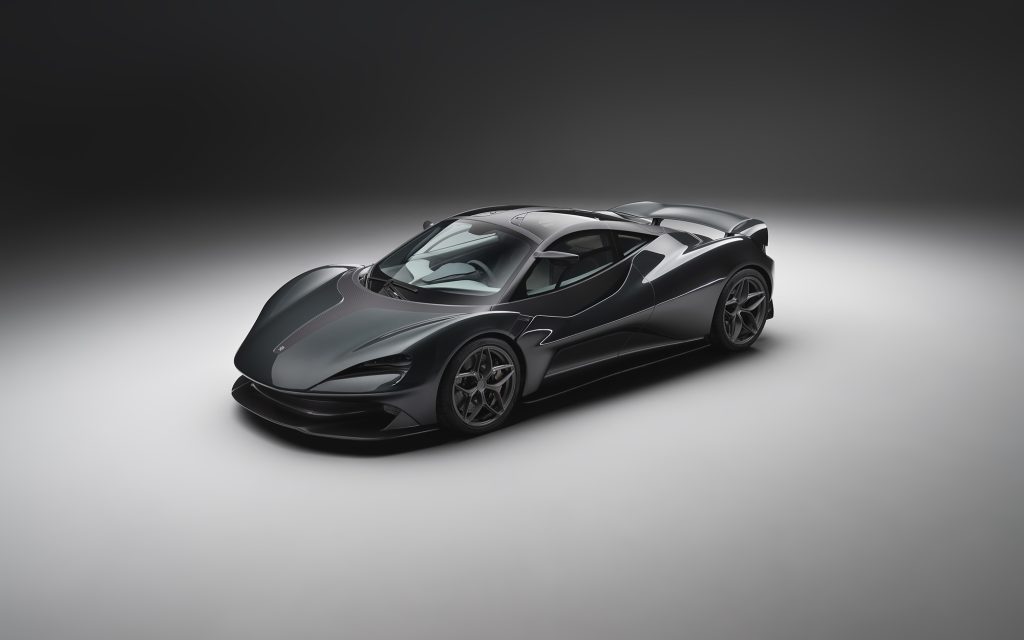

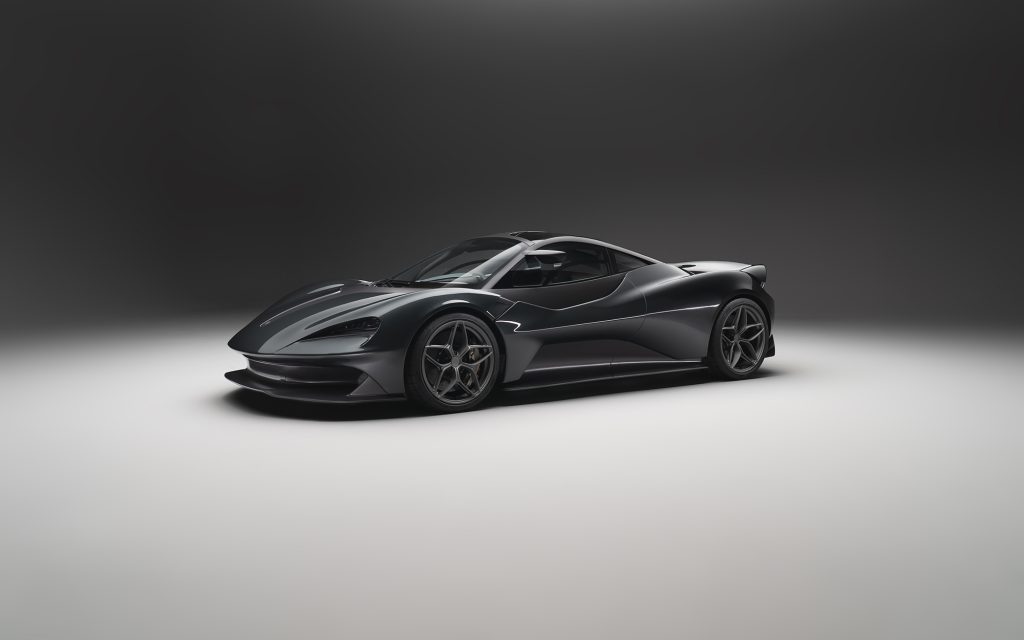
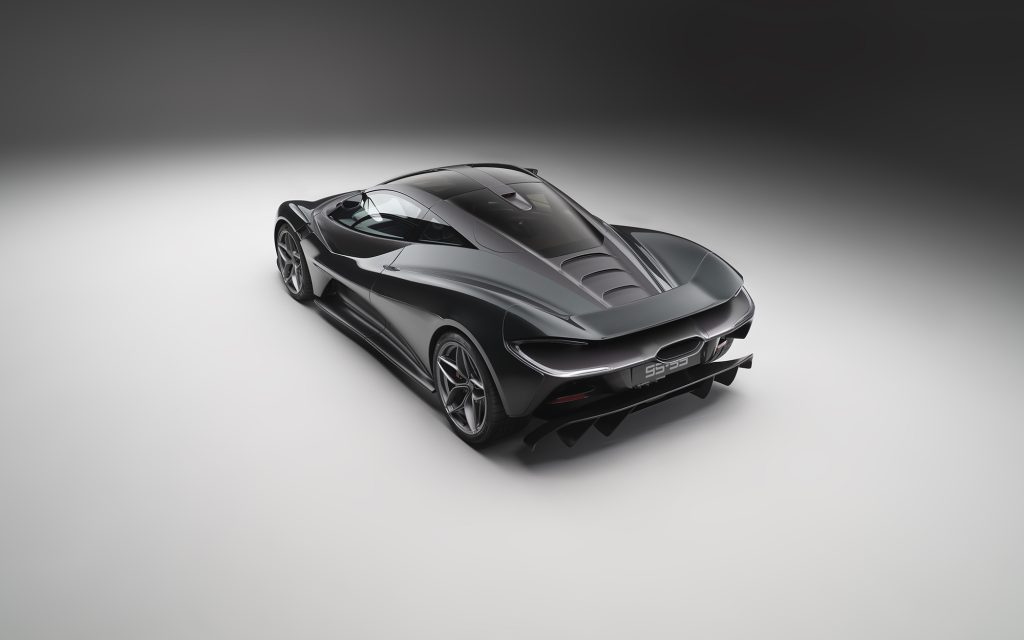
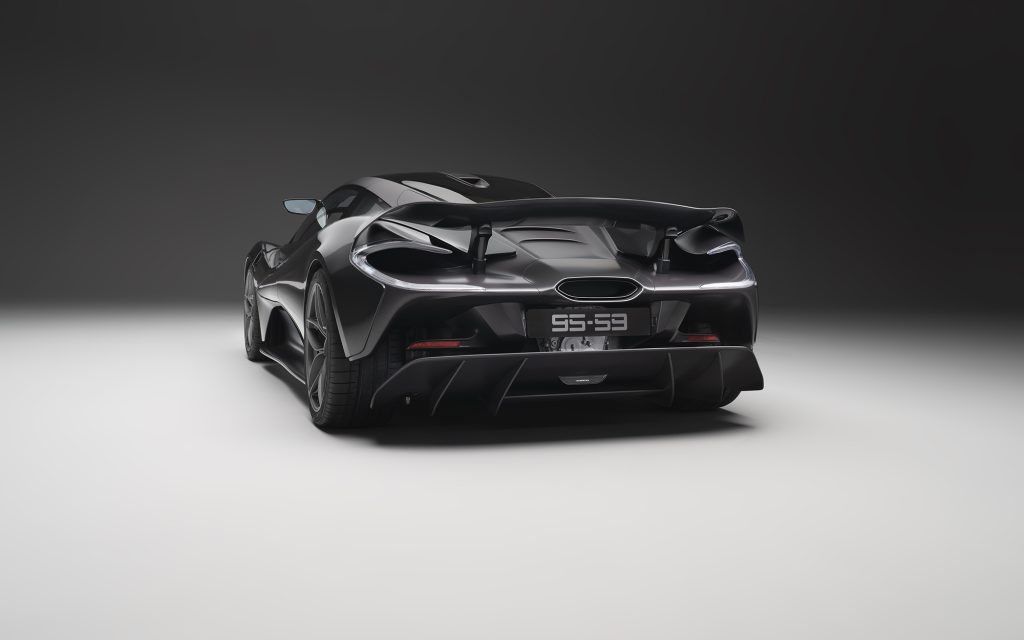

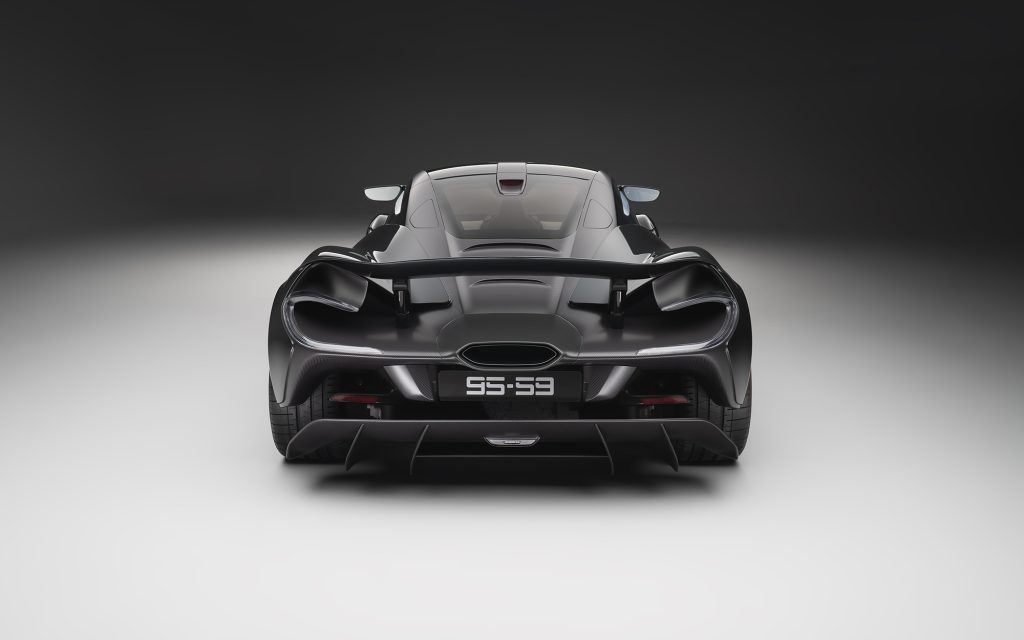


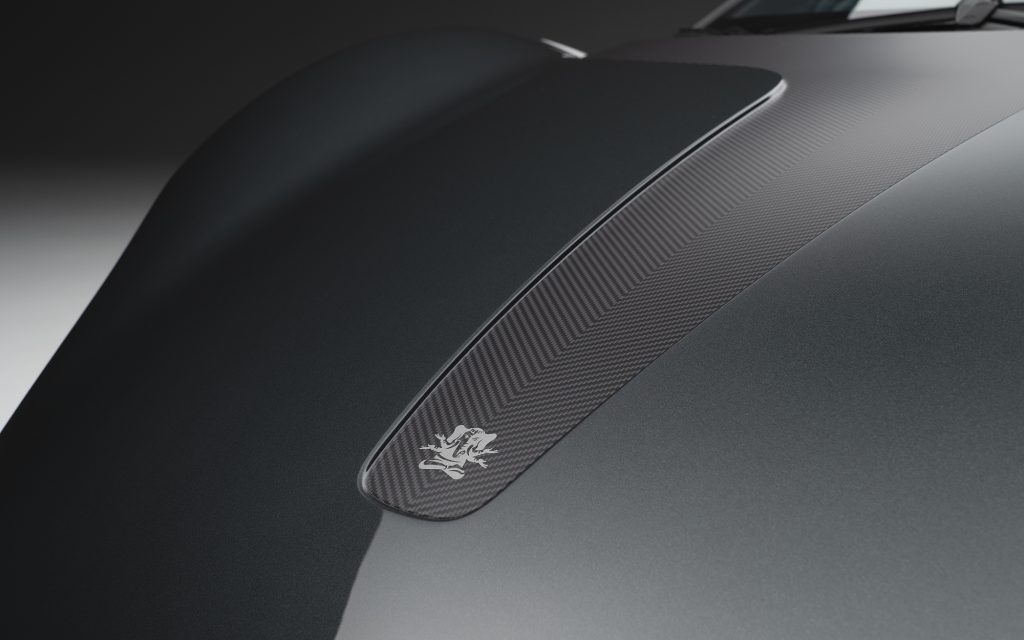
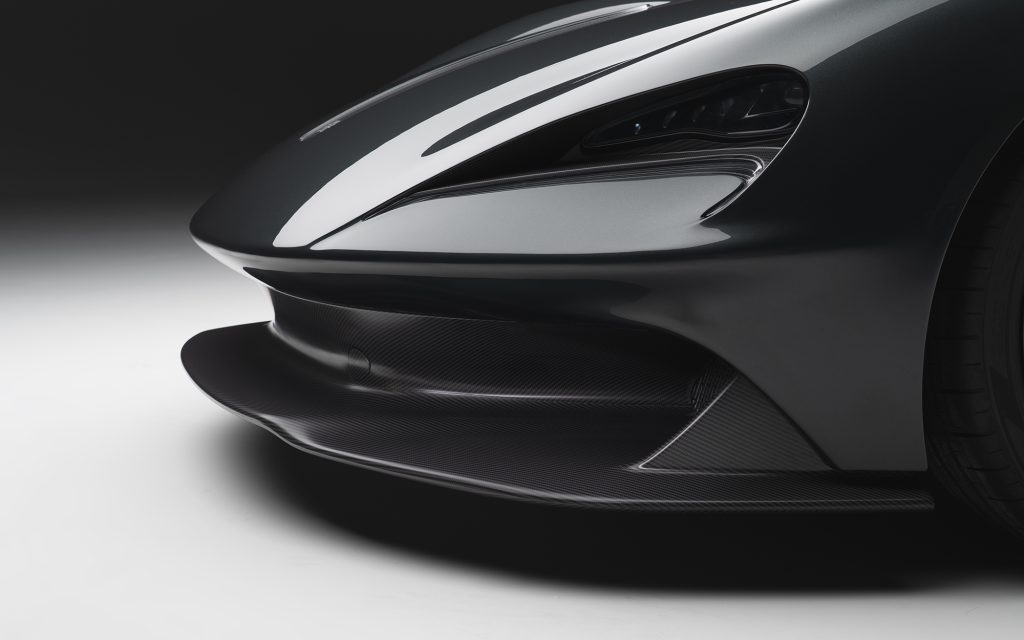

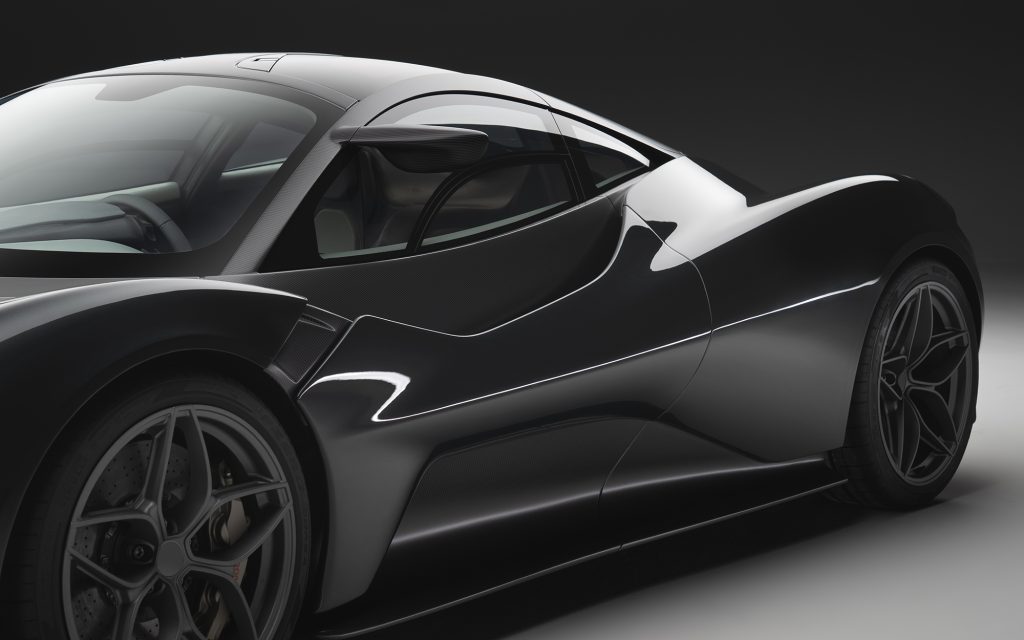
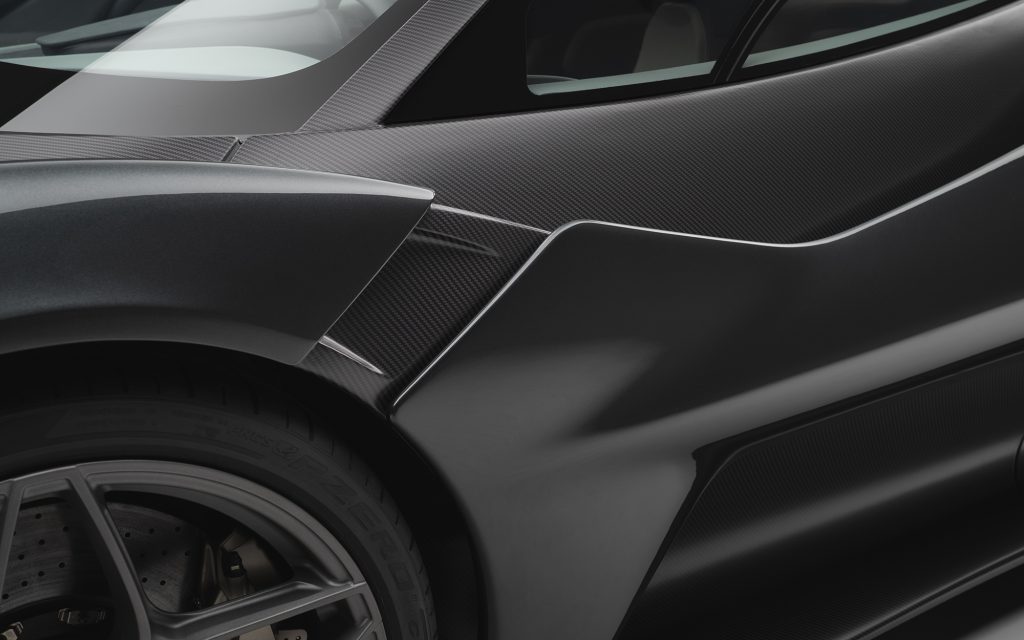

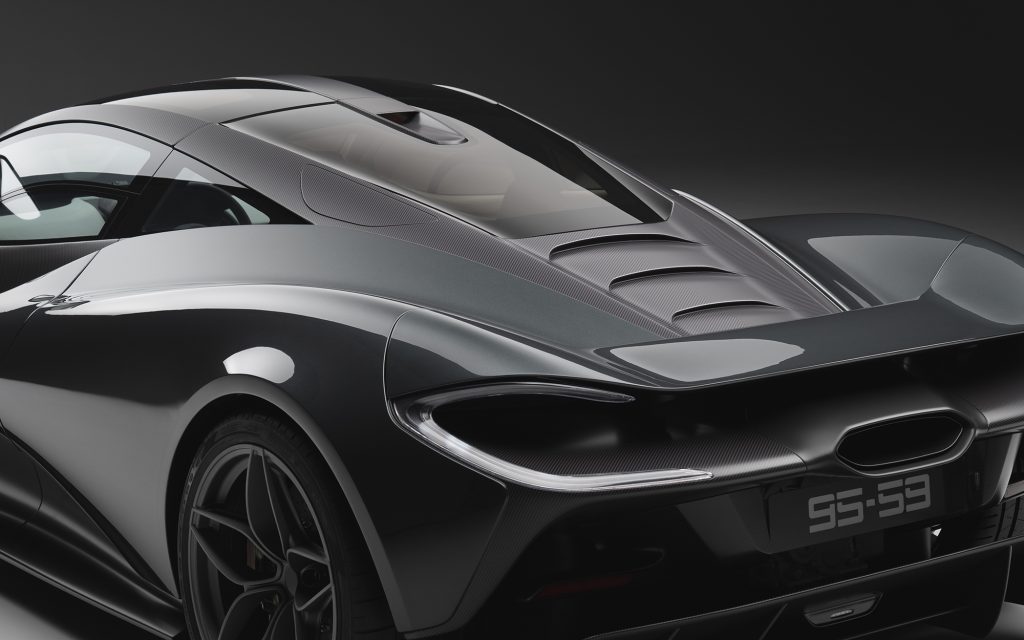

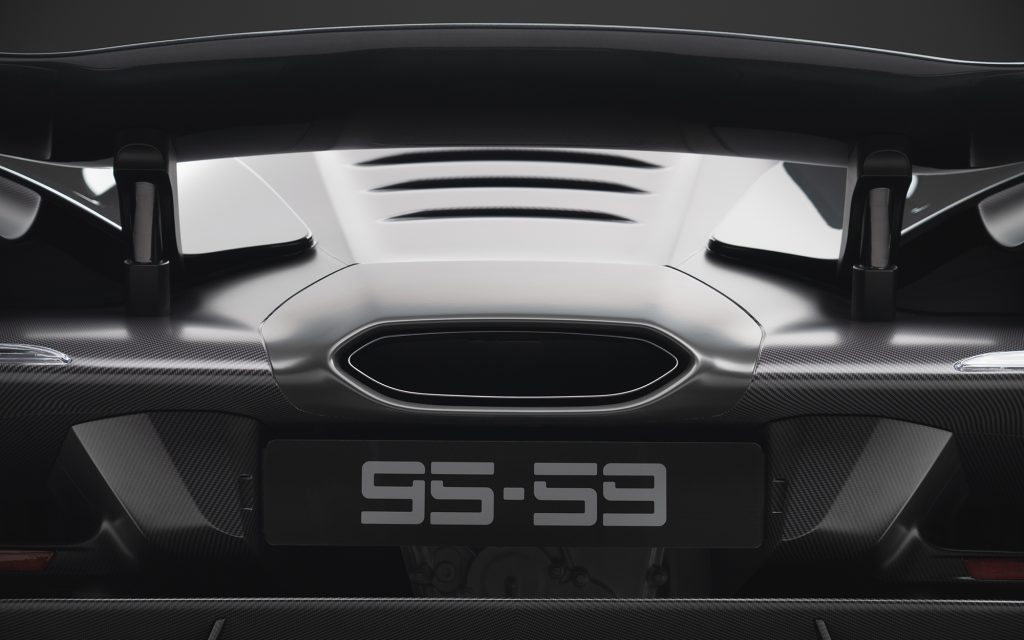
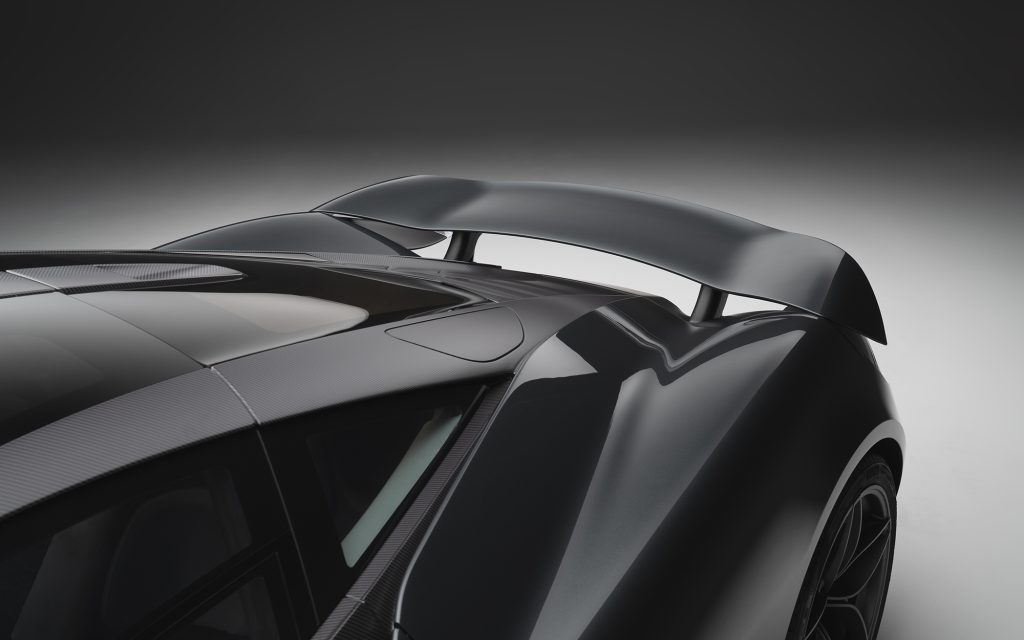

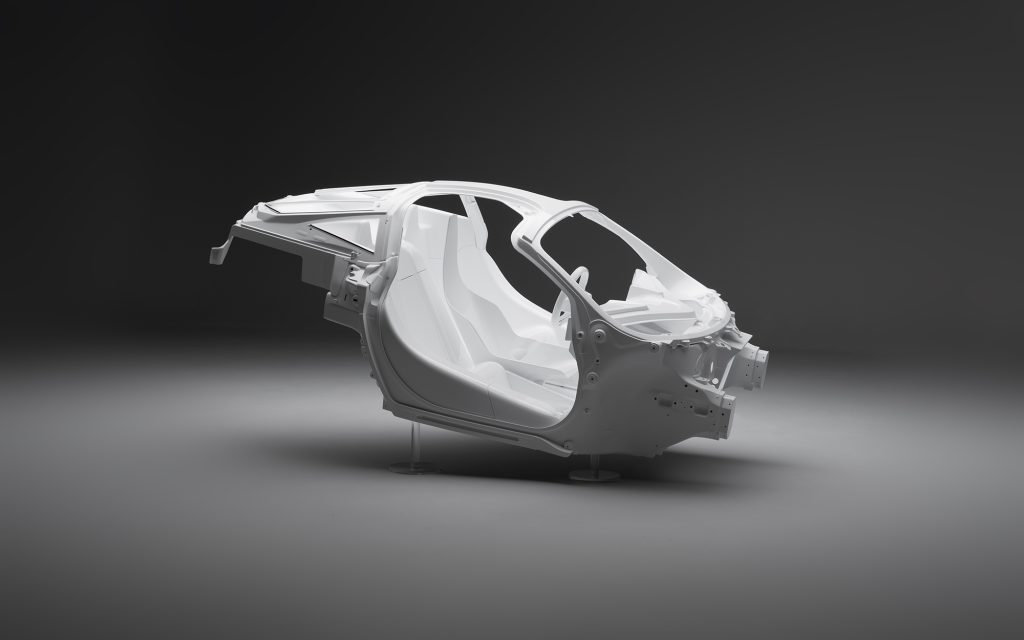


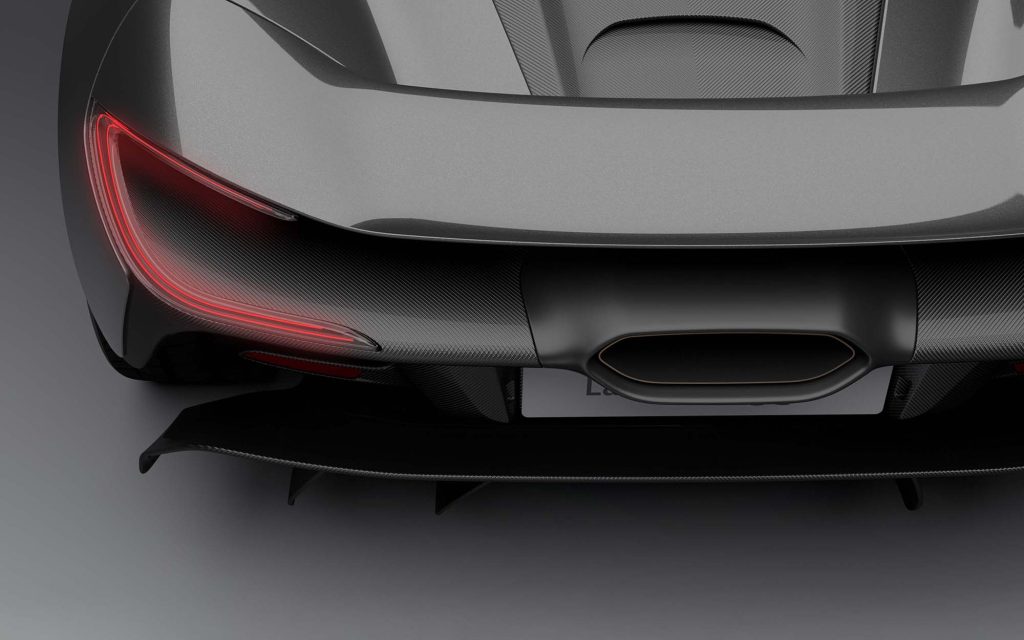
About Lanzante
Lanzante is a British automotive engineering specialist, creating beautifully designed and crafted models for the most discerning car collectors and enthusiasts. With an enviable heritage in motorsport, Lanzante secured a famous victory at the 1995 24 Hours of Le Mans race; having been chosen by McLaren to run the F1 GTR. This result was not only a win on Le Mans debut for Lanzante, but also marked the first victory for the brand on its first attempt. A feat which has not been repeated since.
Based in Petersfield, England, Lanzante is an expert in the design and build of tailored commissions based on some of the world’s most iconic supercar brands – including McLaren, Pagani and Porsche – while also providing on-going support, maintenance and preparation of high performance and historic road and track cars.
Disclaimer
The Lanzante 95-59 is not sponsored, associated, approved, endorsed nor, in any way, affiliated with McLaren Group Holdings Limited (“McLaren”). McLaren and its group companies are the owners of numerous trademarks, both registered and unregistered, including, without limitation, model numbers and names of certain McLaren cars. Any mention of McLaren or any of its subsidiary companies, trademarked names or other marks is for the purpose of reference only.


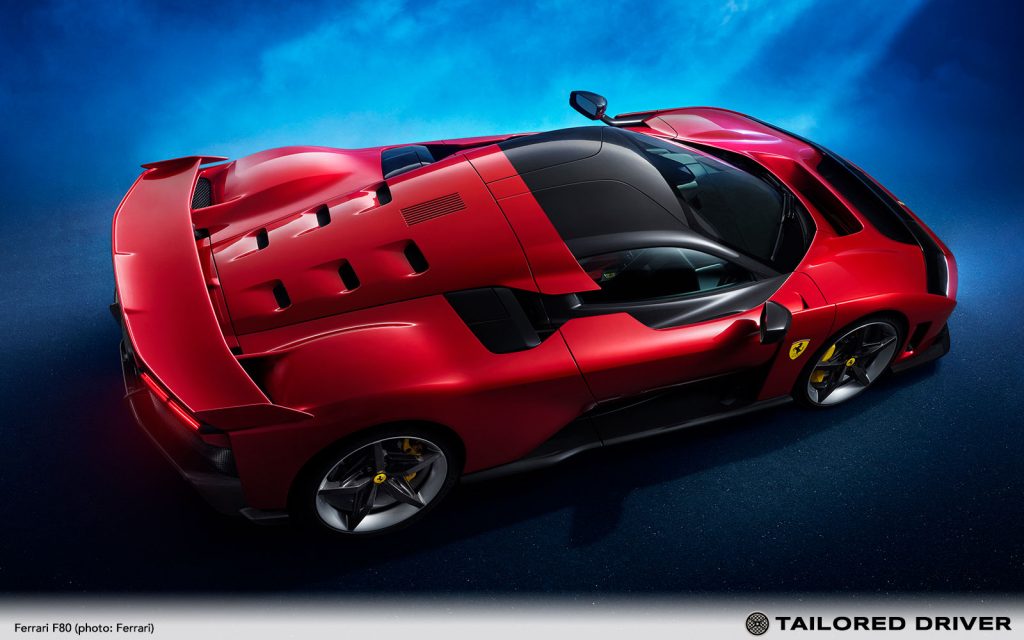
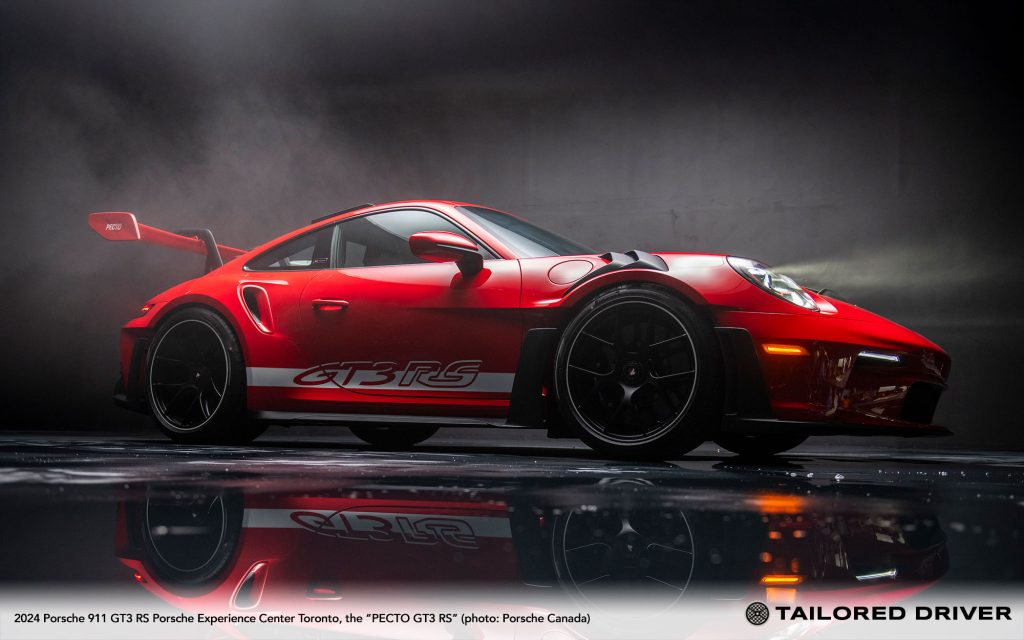
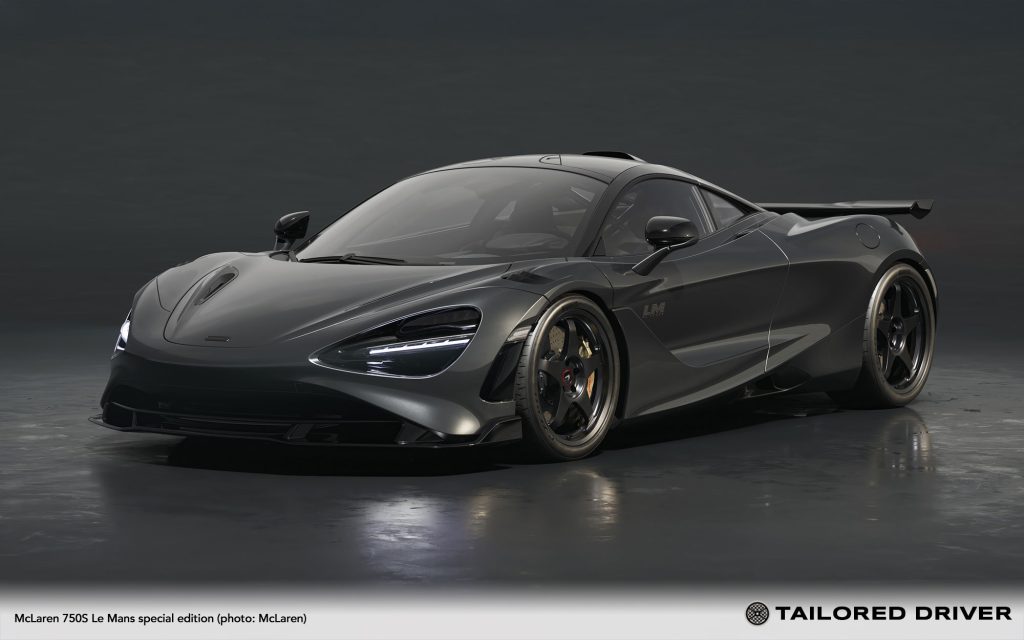
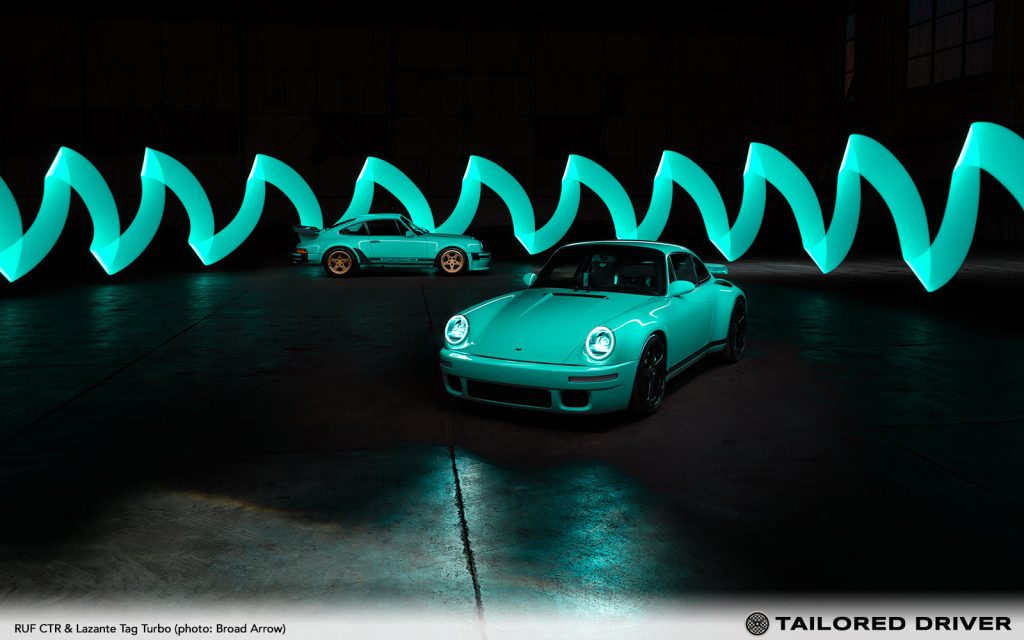
Responses